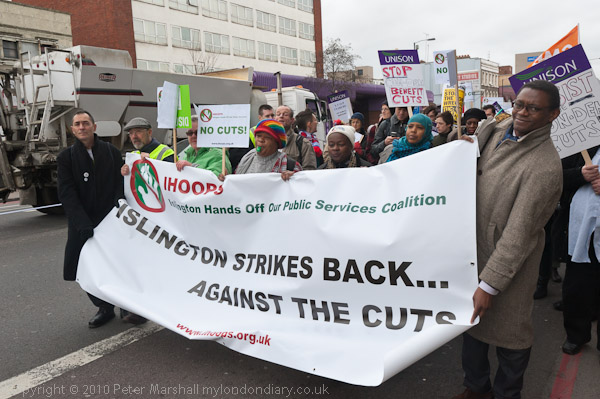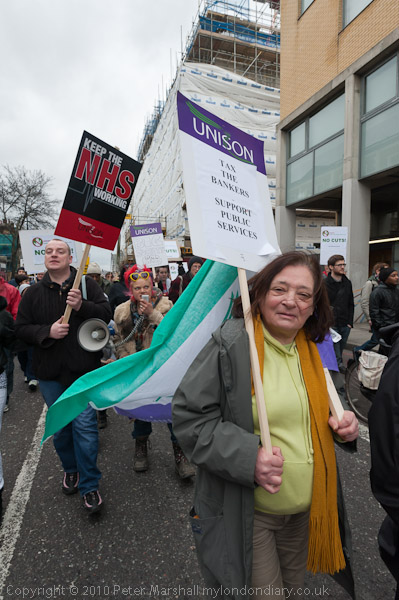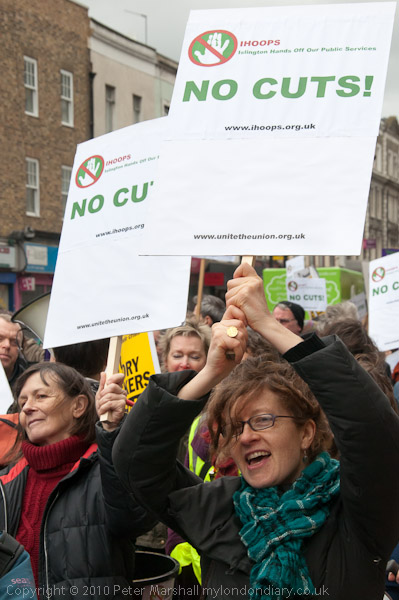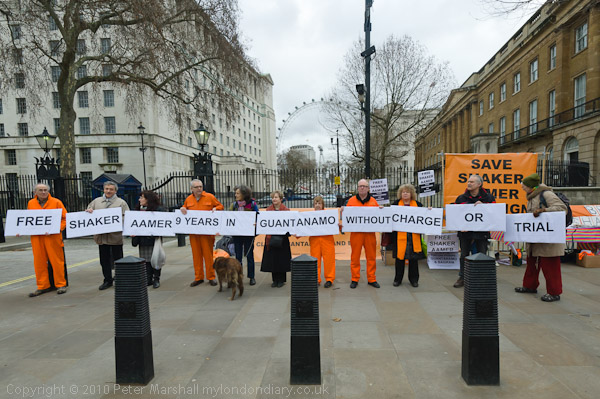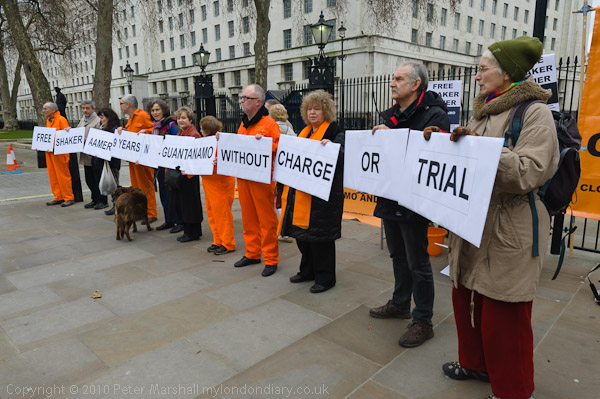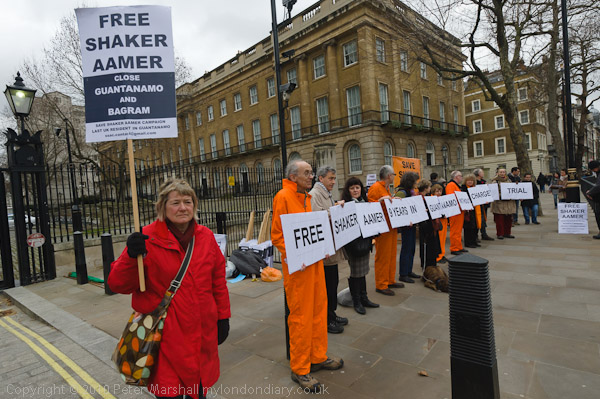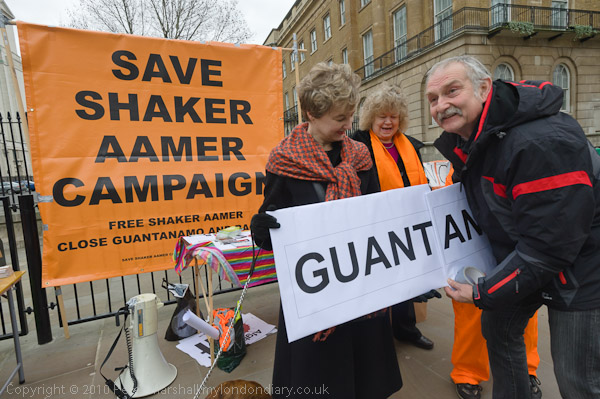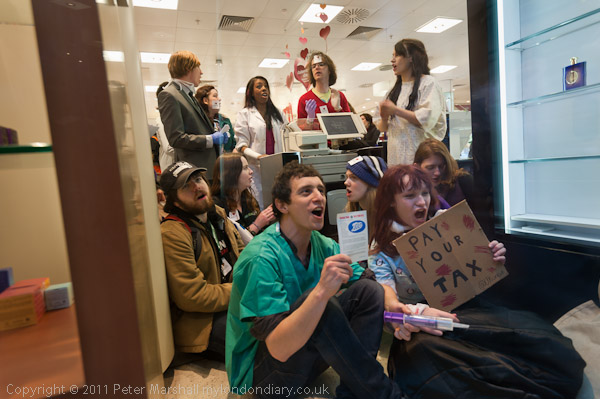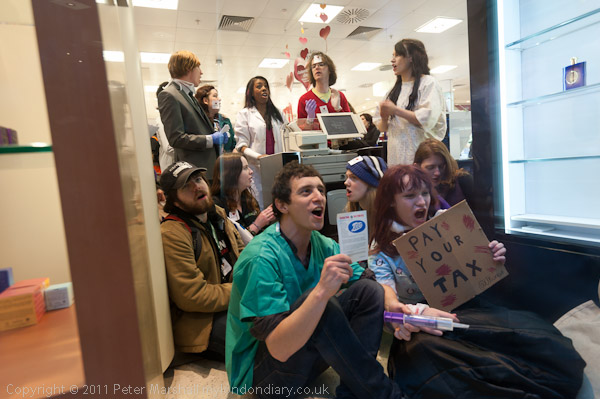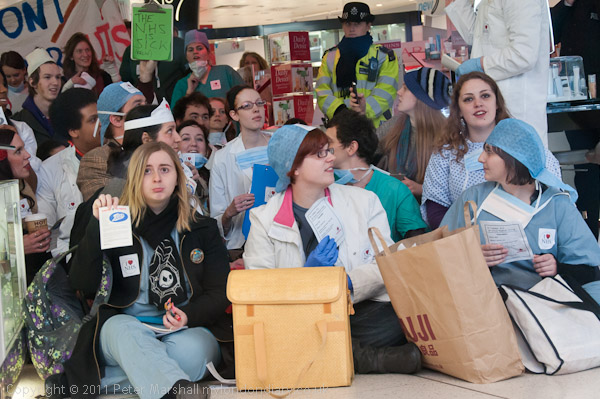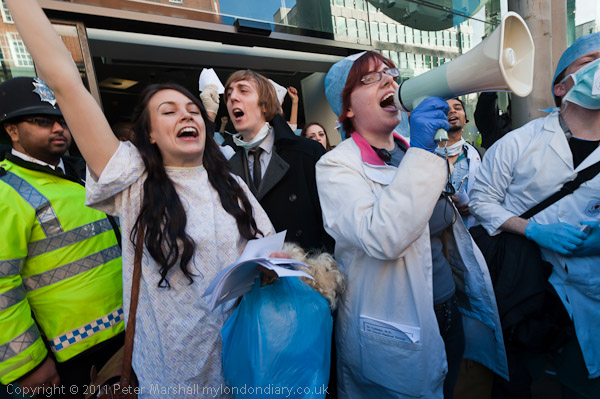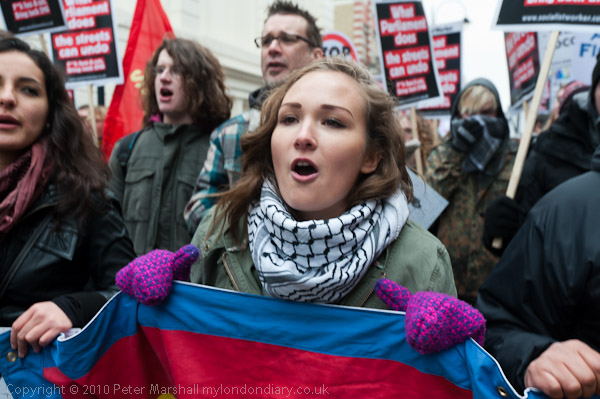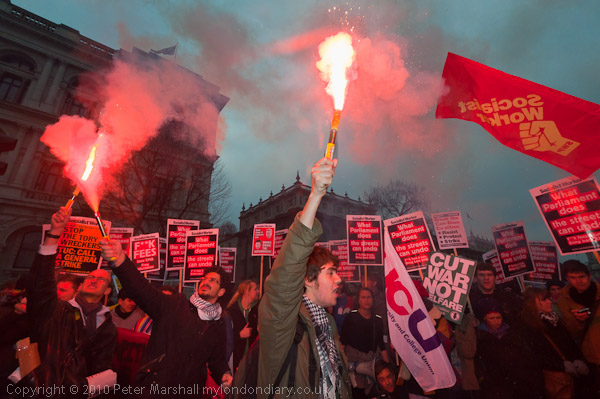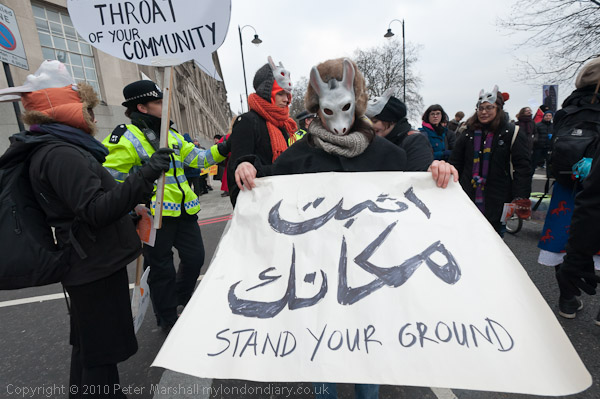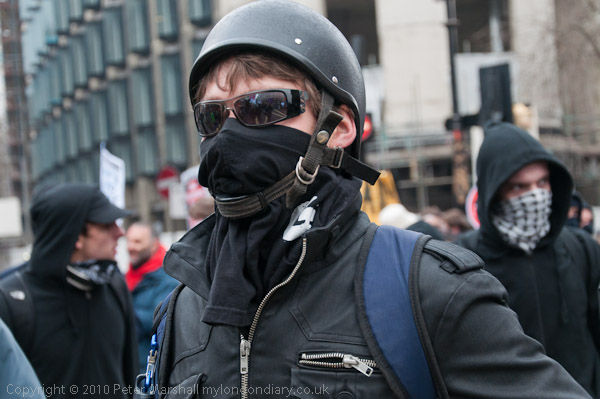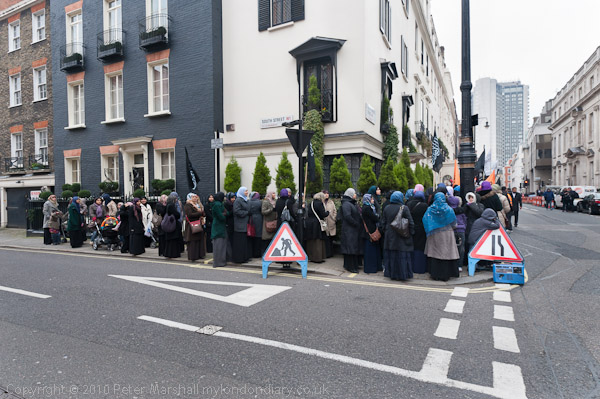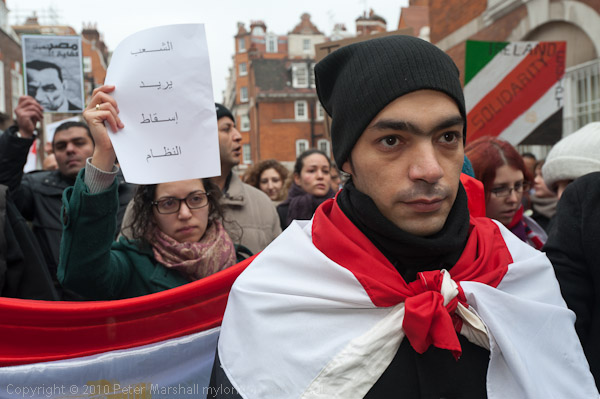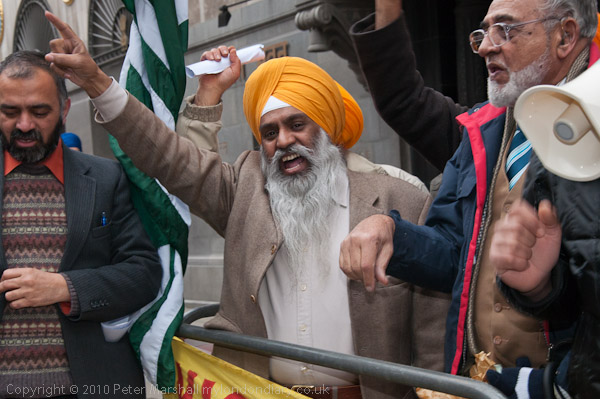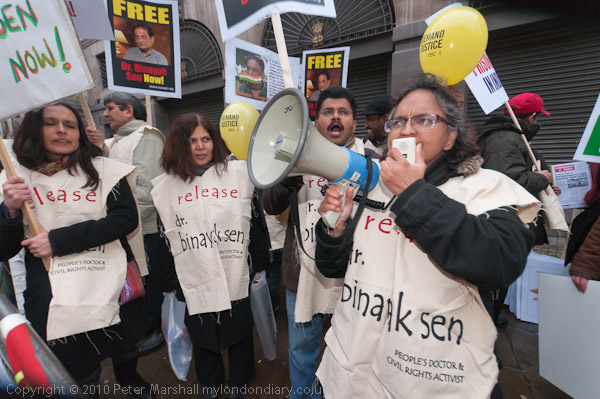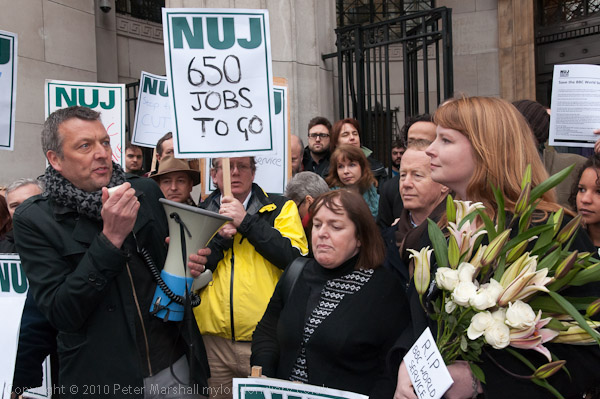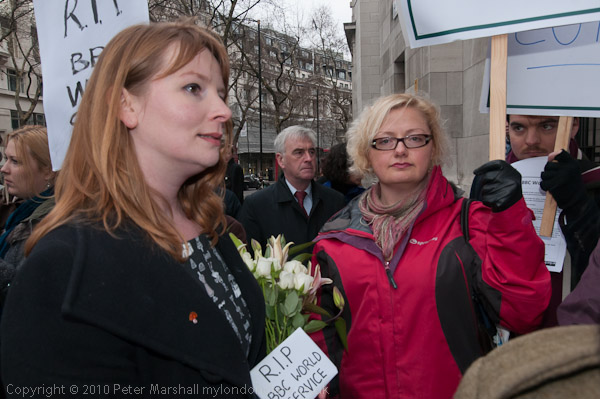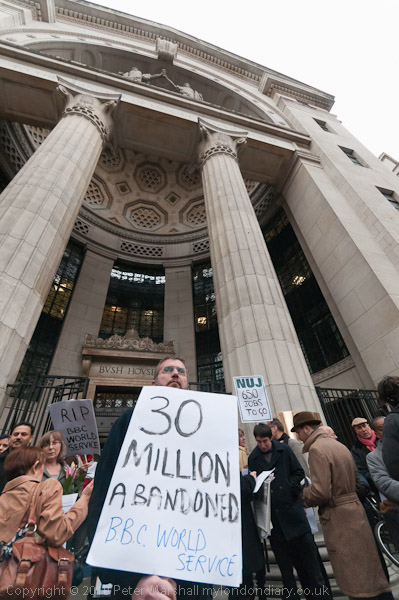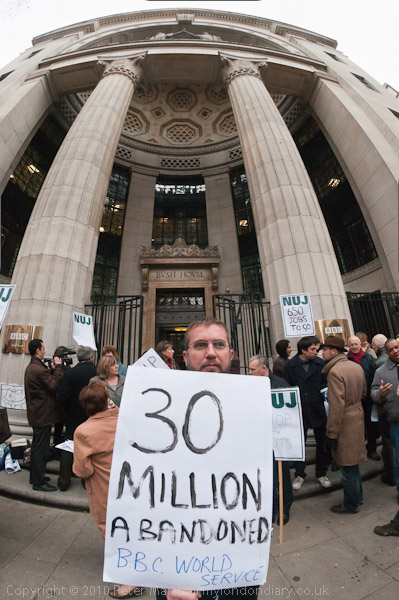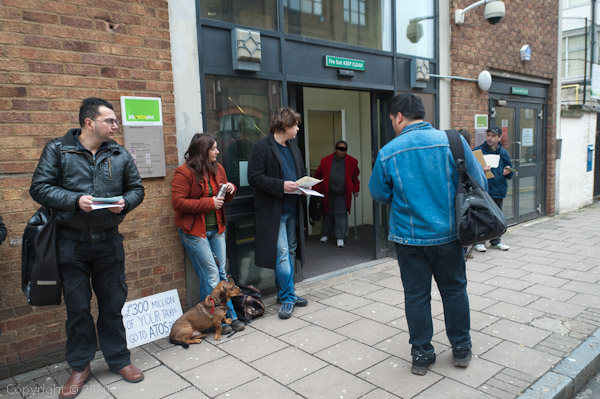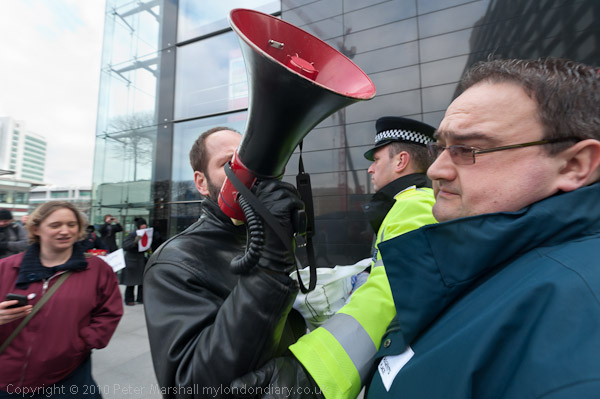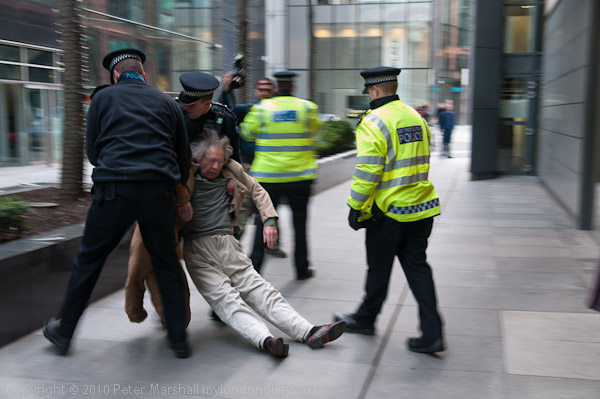Tariq Ali is really a gift for photographers:
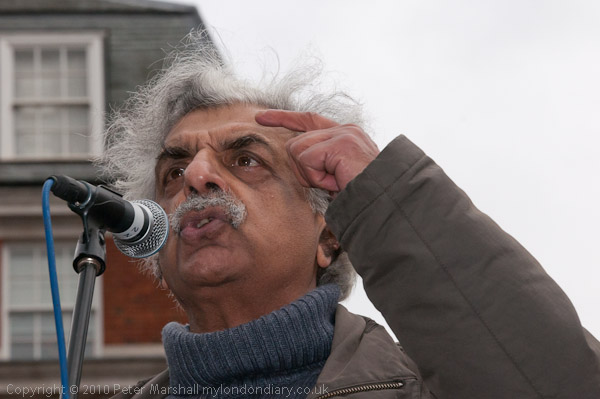
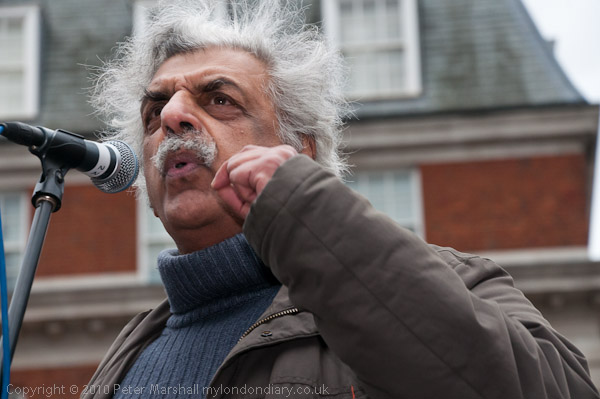
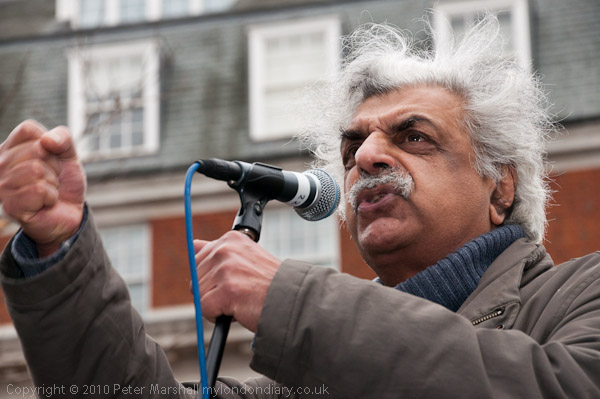
Three views of Tariq Ali speaking
And I could have chosen a dozen or more other frames from the many I took as he spoke with great passion outside the US Embassy in Grosvenor Square, a place which brings back many memories for those of us involved with protest since the sixties.
One of the problems of photographing speakers is always the microphone, making its presence felt in many shots, often getting in the way of the picture you would like to take. There are relatively few occasions on which it really improves an image to have it in front of someone’s face, but sometimes it can’t be avoided.
The hardest people to photograph speaking are those who get really close to the microphone, speaking quietly into it and always looking in the same direction. Most of them never open their eye too! Tariq Ali speaks with great force, making full use of dynamics, and although he took the loudspeakers rather beyond their rated limits, most of the times there was at least a small gap between him and the microphone. And as you can see he has quite a range of gesture and expression, looking around the crowd. Actually rather more than my pictures here show, as probably around four fifths 0f the time he had moved so that the microphone was obscuring too much of his face for my liking.
There was also space for me to move around, though I had to take care doing so to avoid getting in shot too much for the several video cameras and other still photographers also taking pictures. But I’d started by choosing the position from which I’d taken these shots – usually around my favourite angle for such pictures, and after trying from a few other angles, came back to it, just moving slightly.
These pictures were taken with the D300 and the Nikon18-105mm, and most of the time I was working at its full stretch, equivalent to 157mm. It is a little long for portraits, but a decent compromise, as I’m looking up at quite an angle to the speakers on a small stage. I’d set ISO 1000 to give me shutter speeds and apertures around 1/250 f8, though with the camera on P setting they were changing a little frame to frame. But you do need a fairly fast shutter speed both to avoid camera shake with the long lens and also to avoid too much blur with those highly controlled ‘wild’ gestures. And of course they all use flash, which really helps to bring the face out of the shadows.
I tried to keep the focus on the eyes – and to make sure they were open, and generally succeeded. It’s great having the preview button set up to zoom right in during image playback so you can check that these things are right.
Backgrounds are often a problem, and sometimes – as in this case – there was not a great deal I could do about it. I did take a few pictures from a different angle with just a white sky as a background, but again it wasn’t a great background. It would have been nice if the stage had been set to have the embassy US flag and that big eagle hovering above him as he spoke, but it was actually directly behind me as I too the pictures
Of course I photographed others as well, the protesters as well as most of the other speakers.
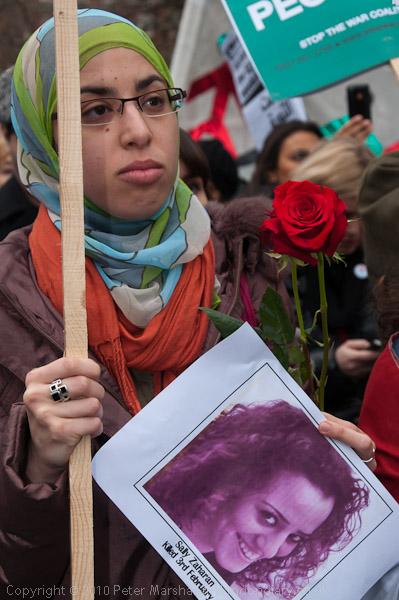
Muslim woman in headscarf holds red rose& photo of Cairo victim Sally Zaharan
And of course I had to have at least one picture showing that embassy, eagle & flag.
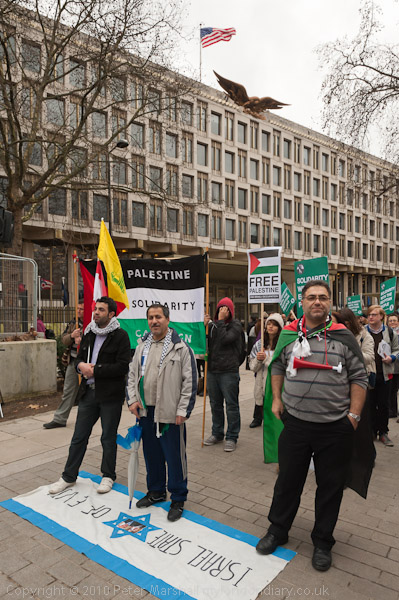
More at US Embassy Rally For Egypt on My London Diary.
